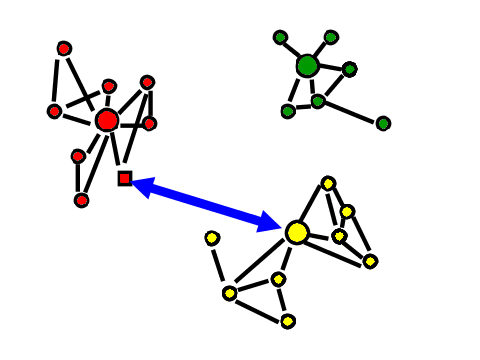Howard Rheingold’s NetSmart offers an interesting analysis of the potential benefits of online networks. As I understand his analysis, there might be a couple of issues anyone hoping to learn from an online community might overlook.
The first is “the power of weak ties”. A tendency of those new to the network might be to motivate friends to convene for online discussions. I am reminded of the “edchat” phenomenon when bringing up this issue. In comparison to those we know, “weak ties” bring something new to a conversation – different ideas and perhaps challenges to existing ways of thinking. The value in advancing thinking is to experience different perspectives and challenges to existing personal views.
Given that “echo chamber” networks are likely most common (my comment), members of a given network who bridge to other networks (networks with different perspectives) are particularly valuable. Such participants may not be the most prominent within a given network, but add the diversity that encourages a deeper examination of topics.
It might be helpful to examine what you consider your personal learning network in this fashion. Are you a bridge? Does your network involve those who serve as bridges? Do administrators participate with classroom teachers? Do researchers participate with practitioners?
These analyses offer a description of what types of learning groups are most productive, but not necessarily how to develop a productive group. I have a thing with those who use the phrase “from what we know about learning”. I would prefer that something specific follow this phrase rather than assuming any position taken has been magically justified. Here is one thing I think we know about learning (from Piaget and other constructivists, conceptual change research, etc.) – models of the world mature when existing models are challenged. Being willing to maintain an open mind and to seek diversity are important characteristics in learning individuals and learning groups. So, one place to begin in generating a more productive learning group might be to define the diversity in the existing organization and consider how this diversity might be increased. It would seem quite practical to examine the transcripts from past discussions and look for indicators of variety and even contradiction.
![]()
